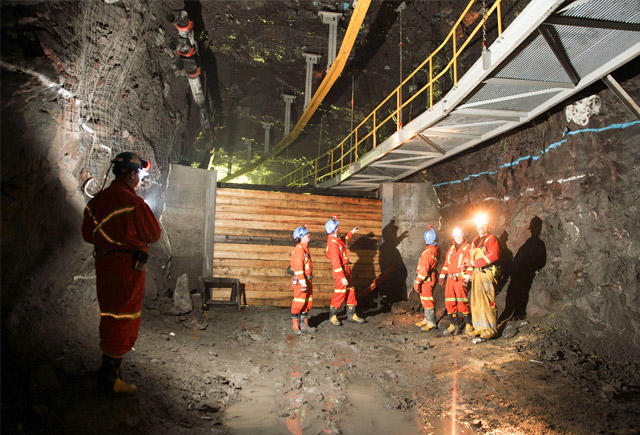
Low metal and mineral prices to stifle growth in Canada’s territories in 2016
by Canadian Manufacturing.com Staff

Report forecasts modest growth for Nunavut, Yukon, but almost no gain for N.W.T.

De Beers elected to close its Snap Lake diamond mine 220 kilometres northeast of Yellowknife, in Dec. of 2015, a move that will hit the territory’s economy hard. PHOTO: De Beers
OTTAWA—Facing down falling metal and mineral prices, Canada’s territories are in for a year of sluggish growth, according to a new Conference Board of Canada report.
The think tank’s latest Territorial Outlook forecasts positive, but stifled expansions for the economies of Nunavut and Yukon, but a near-flat performance for Northwest Territories.
“All three territories faced difficult economic conditions in 2015, and the hard times are not over yet,” Marie-Christine Bernard, associate director of Provincial and Territorial Forecast for the Conference Board, said. “The mining sector will continue to face headwinds as most of the same conditions that prevailed last year are expected to continue over the next couple of years.”
Following three years of declines, Yukon’s economy is expected to get back into positive territory in 2016, with projected growth of 2.7 per cent. Even with the worldwide commodities slump, the Conference Board projects Yukon’s mining sector will increase its output by 5.4 per cent over the course of the year. This growth could meet a sudden halt, however, if Capstone ceases open-pit mining in Aug.—a move it said it would make if prices do not improve. Despite the uncertain outlook, the Conference Board pointed to Yukon’s emergence as a tourist destination as a positive sign, and one that could fuel growth this year and beyond.
Nunavut’s economy, meanwhile, is expected to advance slightly as well. With a mix of mining projects as well as the development of the $143-million Canadian High Arctic Research Station (CHARS) in Cambridge Bay and the $300-million upgrade to the Iqaluit airport, the province has several growth drivers in place until at least 2017. With mining exploration in the territory is on the rise—creating opportunities down the line—Nunavut is expected to grow by 1.2 per cent in 2016 and by even more in 2017.
The Conference Board’s outlook for N.W.T. is more reserved. With the shutdown of De Beers Canada’s Snap Lake mine in Dec.—a project that represented 13 per cent of the territory’s mining output—the northern region will look to the Gahcho Kué mine to replace those lost jobs and lost output. The new mine will begin production in the third quarter of this year and forecasts show stronger growth for N.W.T. in 2017 when the mine ramps up production. For 2016 though, the territory’s economy is expected to grow by just 0.7 per cent.